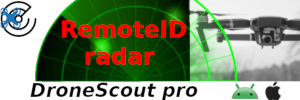You are using an out of date browser. It may not display this or other websites correctly.
You should upgrade or use an alternative browser.
You should upgrade or use an alternative browser.
Drone Professionals are concerned about data security:
- Thread starter The Droning Company
- Start date
AMann
Well-Known Member
Teledyne is an interesting company with some amazing products. I got to try out some of their new hybrid night vision systems a while back that combine IR with amplified light and wow, the resolution was amazing, even at a distance. We were doing bat surveys and counts of them at some mines on a base and the tech we were using was really neat. I am sure putting something like those out in public would open up the insides of private homes and other buildings for all to see. Data is not private anymore.
KC2020
Member
Teledyne is an interesting company with some amazing products. I got to try out some of their new hybrid night vision systems a while back that combine IR with amplified light and wow, the resolution was amazing, even at a distance....
They bought FLIR last year and have incorporated their technology into the devices you were using. They're linked in the article but it doesn't point out that they're a recent Teledyne acquisition.
I drive by their headquarters every day and frequently see their development vehicles loaded with cameras on the road and at the harbor here in Santa Barbara.
They're the primary producer of the night vision systems for the military.
AMann
Well-Known Member
We had some GEN3+ goggles to use (also made by FLIR) and they were no match to the new scopes we tried out. The hybrid system used a video screen instead of a phosphor screen like standard night vision uses.They bought FLIR last year and have incorporated their technology into the devices you were using. They're linked in the article but it doesn't point out that they're a recent Teledyne acquisition.
I drive by their headquarters every day and frequently see their development vehicles loaded with cameras on the road and at the harbor here in Santa Barbara.
They're the primary producer of the night vision systems for the military.
KC2020
Member
The issue with the type of display is the same as with other technologies. How much power does it need and how much heat does it generate. As the goggles are designed to be worn the weight becomes an additional factor in the design.We had some GEN3+ goggles to use (also made by FLIR) and they were no match to the new scopes we tried out. The hybrid system used a video screen instead of a phosphor screen like standard night vision uses.
Now that FLIR has basically unlimited resources to develop with I'm sure they'll make significantly faster progress with these issues.
The Santa Barbara University of California campus is just about a mile from FLIR. UCSB has been doing development and research with/for Cree for years. So there are plenty of micro-led prototypes readily available for local companies to beta test with displays.
Similar threads
- Replies
- 42
- Views
- 2K
- Replies
- 15
- Views
- 1K
- Replies
- 0
- Views
- 645
- Replies
- 54
- Views
- 9K
- Replies
- 10
- Views
- 1K
DJI Drone Deals
Members online
Total: 3,410 (members: 13, guests: 3,397)











